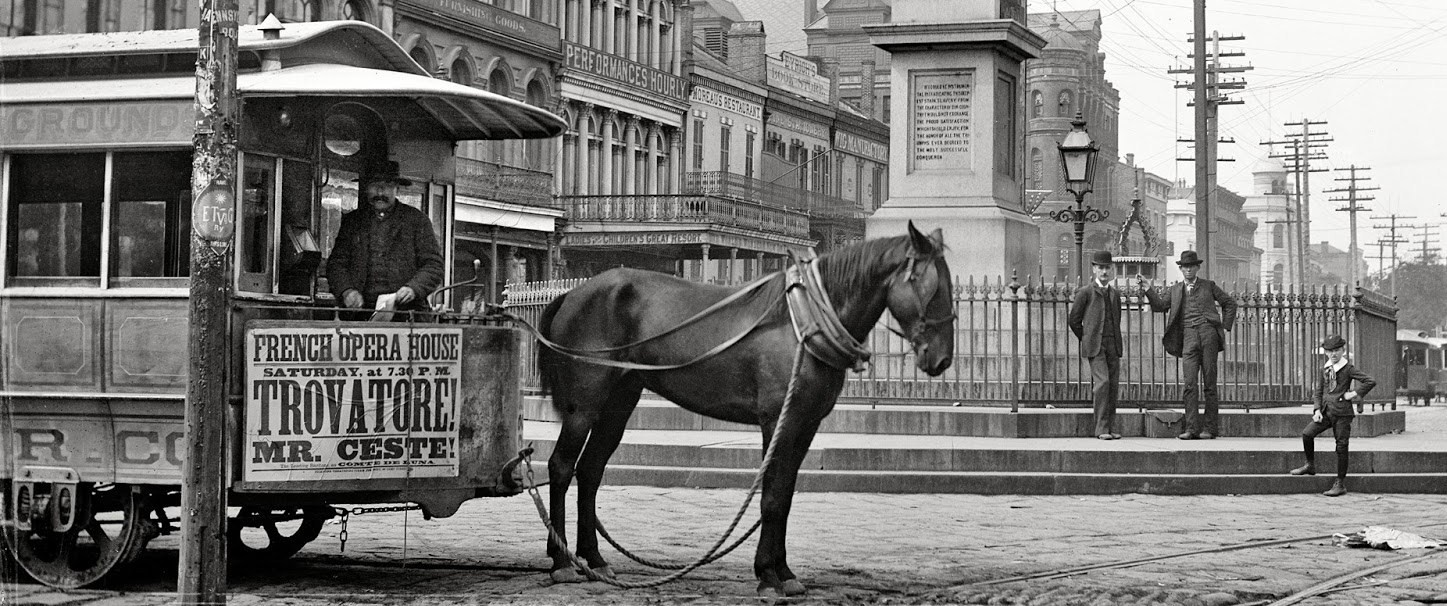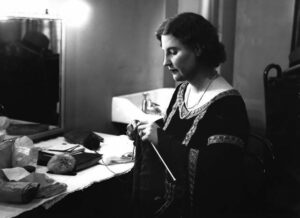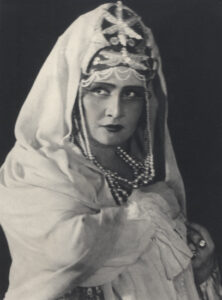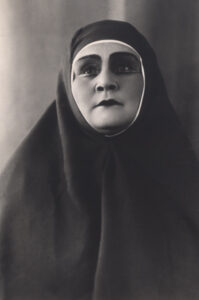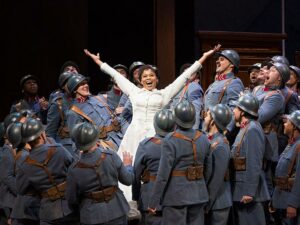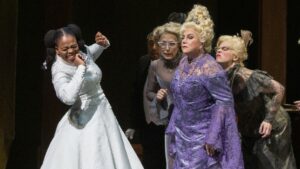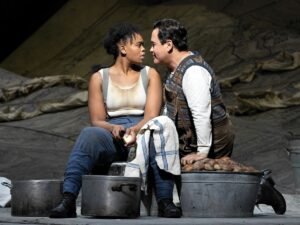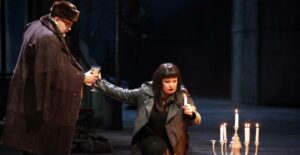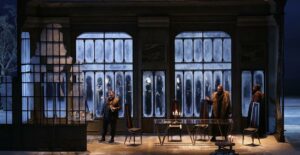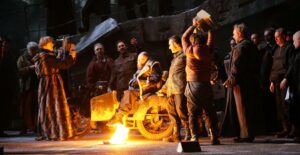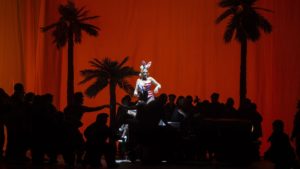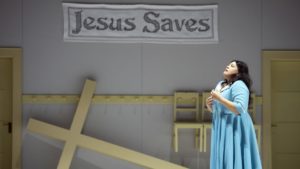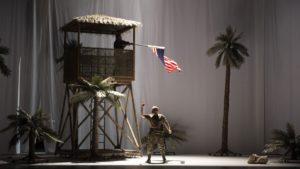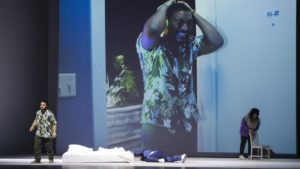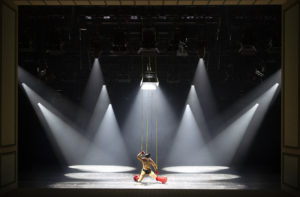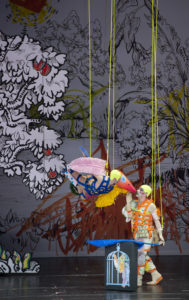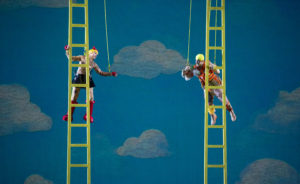Skuś baba na dziada, czyli o ciężkim losie dublerów
Dziś zaczął się 23. Festiwal Beethovenowski. I to jak się zaczął. Najpierw gruchnęła wieść ponura: że Matthias Goerne z przyczyn zdrowotnych odwołuje swój przyjazd do Warszawy i nie zaśpiewa Winterreise. Przez kilka dni żyliśmy w przeświadczeniu, że koncert w ogóle spadnie z programu. I nagle znalazł się zastępca. Szczerze mówiąc, szczęście warszawskich melomanów można porównać do sytuacji, w której miłośnik samochodów zamiast obiecanego Volkswagena Passata dostaje nowiutkiego Rolls-Royce’a. Christian Gerhaher, wsparty od fortepianu przez Gerolda Hubera, przedstawił Podróż zimową z marzeń najwybredniejszego znawcy Schubertowskiej pieśni – w idealnym momencie życia i kariery, w interpretacji popartej nieskazitelną techniką i nieomylnym wyczuciem stylu. Takie cuda zdarzają się raz na wiele lat. Coraz rzadziej, podobnie jak spektakularne kariery operowych dublerów. Ten tekst dedykuję wszystkim zdolnym i ambitnym śpiewakom, którzy z gasnącą nadzieją czekają na swoje pięć minut.
***
Niewiele jest dziedzin sztuki, w których emocje skupiają się z taką intensywnością, jak w operze. Najżarliwsi wielbiciele żyją i umierają wraz z jej bohaterami, płaczą nad losem porzuconych dziewic i poległych w bitwie herosów, uczestniczą w tryumfie dobra nad złem, cieszą się z każdego happy endu, w którym Angelina połączy się ze swym Don Ramiro, Leonora wyciągnie z lochu na wpół zagłodzonego Florestana, a córkom Miecznika uda się przekonać dwóch przystojnych towarzyszy pancernych do zamążpójścia. Robi im się ciepło na sercu nawet wówczas, kiedy rozdzieleni albo zawróceni z błędnej drogi kochankowie zjednoczą się w finale przez śmierć. Niepoprawni operomani mają czasem kłopot z oddzieleniem iluzji scenicznej od rzeczywistości. Przypisują śpiewakom baśniowe moce i mitologizują ich życiorysy, doszukując się w nich podobieństw z losami poniewieranych Kopciuszków bądź podmienionych w kołysce arystokratów.
Dlatego taką popularnością cieszą się anegdoty o młodych, fenomenalnie uzdolnionych dublerach, którzy prosto z kulis weszli w świat wielkiej opery – w nagłym zastępstwie za niedysponowaną gwiazdę. Wśród melomanów wciąż krąży opowieść o Astrid Varnay, która w 1941 roku zadebiutowała na deskach nowojorskiej Metropolitan Opera, przejąwszy partię Zyglindy w Walkirii od zakatarzonej Lotte Lehmann. Trzy lata później na tej samej scenie rozpoczęła się kariera Regine Resnik, dublerki Zinki Milanov w roli Leonory w Trubadurze Verdiego. Podobne cuda zdarzały się także w Europie, na przykład w 1948 roku w bolońskim Teatro Duse, gdzie 23-letnia Virginia Zeani zastąpiła Margheritę Carosio i zabłysła po raz pierwszy w Traviacie – w partii Violetty, w której zdaniem wielu znawców po dziś dzień nie znalazła sobie równych.
Rok 1936. Kirsten Flagstad dzierga na drutach przed debiutem w Covent Garden. Fot. Archiwum ROH.
Czasy się jednak zmieniły. Miłośnicy opery wykupują bilety na spektakle z półrocznym wyprzedzeniem. Rezerwują loty i miejsca w drogich hotelach, a potem wpadają w furię, kiedy ich ulubieńcom zdarzy się odwołać udział w przedstawieniu. Równie bezdusznie przyjmują desperackie próby występu mimo jawnej niedyspozycji. Sama byłam świadkiem kilku takich spektakularnych zawirowań: w 2011 roku w Warszawie, kiedy Olga Pasiecznik zaśpiewała partię Roksany zza kulis, z nogą w gipsie, dublowana w nowej inscenizacji Króla Rogera przez naprędce przygotowaną aktorkę. Prawie trzy lata temu w Filharmonii Berlińskiej, gdy z obsady Snu Geroncjusza Elgara pod batutą Daniela Barenboima wycofali się kolejno Jonas Kaufmann i Sarah Connolly, zostawiając na placu boju tylko barytona Thomasa Hampsona.
Najgłębiej jednak zapadło mi w pamięć przedstawienie Damy pikowej w Staatsoper Berlin w 2003 roku. Premierę i drugi spektakl oddałam walkowerem, w pełni świadoma, że Placido Domingo w partii Hermana zapełni teatr do ostatniego miejsca. Na jego trzeci występ udało mi się wyżebrać Notsitz, czyli przeraźliwie skrzypiący straponten w głębi balkonu. Przysiadłam ostrożnie na brzeżku, oczekując pierwszych dźwięków orkiestry, tymczasem na proscenium wyszedł pan w garniturze i oznajmił, że Domingo poczuł się źle i w ostatniej chwili odwołał występ, delegując zmiennika w osobie ukraińskiego tenora Viktora Lutsyuka. Przez widownię przetoczyła się fala gromkiego buczenia. Na parterze zrobiło się zamieszanie – posiadacze najdroższych miejsc demonstracyjnie ruszyli do wyjścia. Gdyby rzecz działa się we Włoszech, niewykluczone, że pierwsze wejście Hermana przywitano by kaskadą jaj i pomidorów.
Spektakl rozpoczął się w ciężkiej atmosferze, zakończył zgotowaną Hermanowi owacją na stojąco, podczas której Lutsyuk popłakał się ze wzruszenia. Tyle że ten śpiewak – owszem, solidny – nie był młodym dublerem, czekającym na swoje pięć minut w kulisach, lecz doświadczonym solistą Teatru Maryjskiego w Petersburgu, wielokrotnie ściąganym na zastępstwo w tej morderczej partii: pięć lat później do Opery w Lyonie, w 2010 do Teatru Wielkiego w Łodzi, na wyjątkowo pechową inscenizację Damy pikowej w reżyserii Mariusza Trelińskiego, której premierę przesunięto o kilka dni w związku z żałobą narodową po katastrofie smoleńskiej i przez ogólny pomór w obsadzie pokazano w tamtym sezonie zaledwie raz. Mały włos, a do spektaklu w ogóle by nie doszło, bo wybuch islandzkiego wulkanu Eyjafjallajökull skutecznie rozregulował rozkład połączeń lotniczych między Rosją a Polską.
Jak to więc jest z tymi dublerami? Czy naprawdę, jak pół wieku temu, siedzą cierpliwie w kulisach, dziergają na drutach, grają w szachy, i kiedy przyjdzie ich czas, ratują honor teatru, wkraczając na scenę w zastępstwie za niedysponowaną gwiazdę? Niezupełnie. Coraz więcej oper w niewielkiej i dobrze skomunikowanej Europie w ogóle rezygnuje z ich usług, przygotowując serie spektakli w pojedynczej, często międzynarodowej obsadzie – w razie potrzeby ściągając solistów choćby z drugiego krańca kontynentu. Tradycja nieźle płatnych, ale za to zmuszonych do dyspozycyjności „coverów” wciąż trzyma się mocno w Stanach Zjednoczonych. Dyrektorom z reguły wystarcza, żeby śpiewak był pod telefonem i w sytuacji kryzysowej dotarł do teatru w kwadrans. Większej dyscypliny wymagają spektakle transmitowane w radiu, telewizji i mediach internetowych: wówczas dublerzy muszą naprawdę tkwić w kulisach i trzymać rękę na pulsie.
Zamożniejsze teatry, na przykład Opera Paryska, pozyskują dublerów w ramach programów stypendialnych. Młodzi wokaliści uczestniczą w warsztatach dykcji, gry aktorskiej i pracy z ciałem, biorą udział w próbach, przygotowują kolejne partie – a jak im talent i fortuna dopiszą, występują na scenie w mniejszych rolach lub zostają „coverami” uznanych gwiazd. Korzyści obopólne, choć szansa na przełomowy debiut znacznie mniejsza niż przed laty. I w dużo większym stopniu uzależniona od układów, indywidualnej siły przebicia i przysłowiowego łutu szczęścia.
Wniosek? Nie liczyć w tym fachu na mannę z nieba. Sumiennie budować swą markę, nie zadzierać nosa, ale w razie potrzeby rozepchnąć się czasem łokciami. Nie wierzyć w bajki o gwieździe, która odwołała występ na pięć minut przed podniesieniem kurtyny, ani w sensacyjne, podtrzymujące napięcie wśród fanów doniesienia o rozpaczliwych poszukiwaniach opatrznościowej primadonny, która uratuje otwarcie sezonu w prestiżowym teatrze z wielosetletnią tradycją. Czekać, aż uchylą się właściwe drzwi. I pilnować, żeby nie dostać nimi w twarz, kiedy otworzą się raptownie do wewnątrz.
